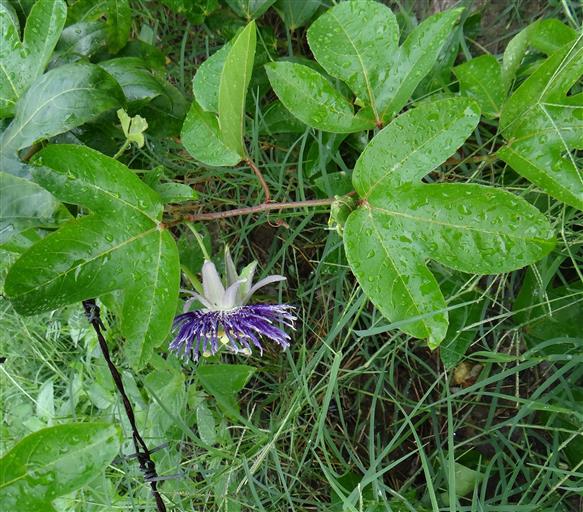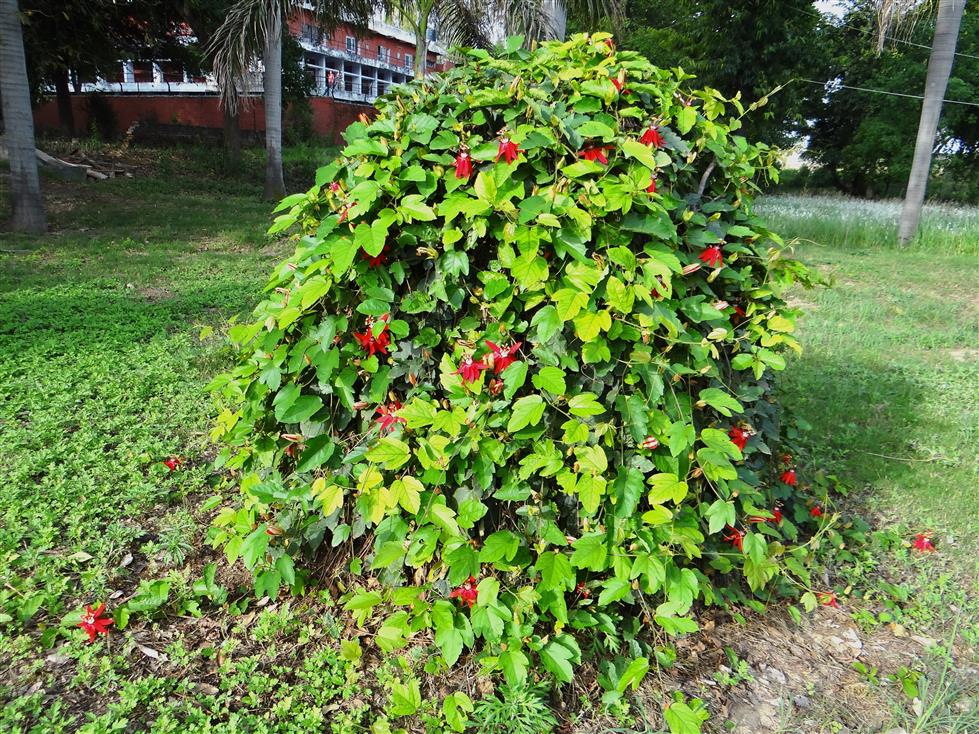PASSIFLORACEAE
Perennial climbing herbs or lianas with axillary tendrils, rarely trees. Leaves usually alternate, simple or compound, mostly stipulate, petiolate, petiole or base of the petiole often with 1 or more glands; leaf blade entire or lobed, venation pinnate or palmate, often with glands on margin and abaxial surface. Inflorescence axillary, dichasial or monochasial cyme, with terminal or first flower modified into a tendril or flowers solitary axillary. Flowers bisexual or unisexual, actinomorphic; bracteate or ebracteate, bracts minute to foliaceous, sometimes glandular. Pedicels articulate. Hypanthium variously shaped, often hollow and usually with a central androphore, gynophore or androgynophore, hypogynous or perigynous. Sepals (3-)5(-6), free or basally connate, imbricate, persistent. Petals (3-)5(-6) or absent, free or basally united, imbricate. Corona inserted on hypanthium, 1- or multi-seriate, concave to cup-shaped, petaloid or staminodial in appearance, composed of filaments or hairs, fleshy, rarely absent. Stamens 3-5, rarely numerous to 60, inserted on androgynophore or at base of hypanthium, antipetalous, free or slightly united at base; anthers oblong, basifixed, dorsifixed or versatile, bithecous, dehiscence longitudinal by slits. Carpels 3(-5), syncarpous; ovary superior, present on top of androgynophore, sessile or stipitate, unilocular, placentation parietal, ovules many, anatropous; styles 3(-5), free or united; stigmas 3(-5), capitate, discoid, reniform or club- shaped. Fruit unilocular, loculicidally 3(-5) valved capsule, rarely an indehiscent berry. Seeds numerous, ovoid, compressed, often beaked, enclosed without a membranous or pulpy aril, endosperm copious, oily.
30 genera and about 932 species

